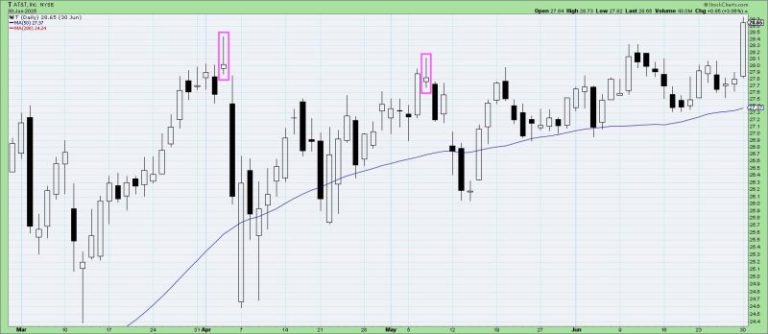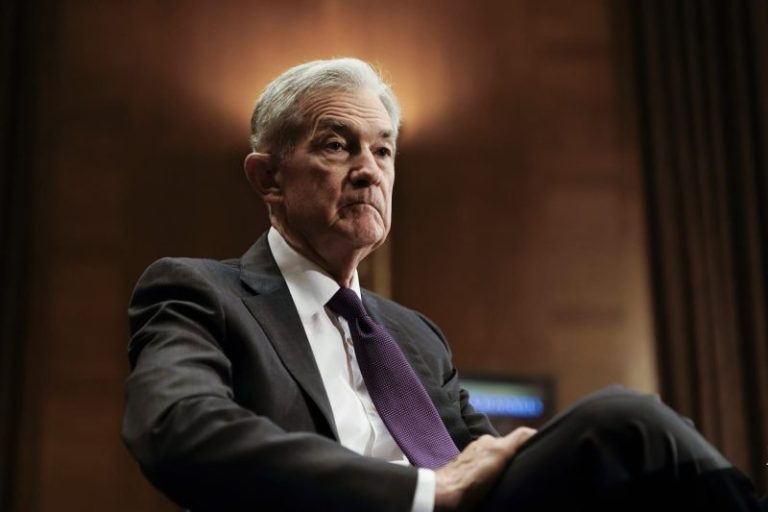Investor Insight
With a fully permitted, high-grade gold project, established infrastructure and first gold production on the horizon, Maritime Resources is set to become Atlantic Canada’s next gold producer, positioning the company for significant re-rating and long-term growth.
Overview
Maritime Resources (TSXV:MAE) is a Canadian gold development company focused on generating near-term cash flow from the Hammerdown gold project, a high-grade past-producer in the prolific Baie Verte mining district of Newfoundland & Labrador. The project is fully permitted, de-risked and shovel-ready, with construction underway and first ore deliveries to the Pine Cove Mill expected in late summer to early fall 2025.
Hammerdown project site
Hammerdown benefits from significant infrastructure synergies, including proximity to paved roads, power, ports and Maritime’s wholly owned Pine Cove processing facility. Unlike many greenfield developers, Maritime is executing a bootstrap production model that leverages its installed infrastructure and local skilled labor to reduce costs, minimize risk and accelerate value creation through short term cash flow generation during a period of record high gold prices
Longer term, the company plans to build out a 100,000 oz/year production platform by incorporating nearby deposits (Orion, Stoger Tight, Deer Cove) and utilizing its idle 700 tpd Nugget Pond gold plant. Maritime’s regional land package includes more than 435 sq km of highly prospective ground with gold, VMS, and porphyry-style mineralization potential.
Company Highlights
- Near-term Gold Production: First production targeted for H2/2025 from the fully permitted Hammerdown open pit project.
- High-grade Gold Reserves: 1.9 Mt at 4.46 g/t gold (272 koz) proven and probable reserves support initial 35,000-45,000 oz/year production.
- Low-CAPEX Startup: Initial capital estimated at C$15 to $20 million, among the lowest in the sector for a new mine, leveraging Maritime’s fully operational Pine Cove mill
- Owned Processing Infrastructure: Pine Cove Mill (1,300 tpd, operational) and the Nugget Pond gold plant (700 tpd CIP circuit, on standby).
- Exploration Upside: 435 sq km land package includes multiple brownfield and greenfield targets proximal to infrastructure.
- Institutional Backing: Strong support from Dundee Corporation, Eric Sprott and other institutions.
- Local Workforce Advantage: Fully staffed Pine Cove Mill with 100 percent local residents
Key Projects
Hammerdown Gold Project
The Hammerdown gold project is Maritime’s flagship asset and is strategically located near the town of King’s Point in the Baie Verte mining district of Newfoundland and Labrador. A past-producing, high-grade deposit formerly operated by Richmont Mines, Hammerdown is being redeveloped as a shallow open-pit operation. The project hosts proven and probable reserves of 1.89 million tonnes at an average grade of 4.46 grams per ton (g/t) gold for 272,000 oz of contained gold, making it one of the highest grade open pit projects in North America
A feasibility study completed in 2022 outlined annual production of approximately 50,000 oz over a 5-year mine life, with attractive economics including a pre-tax NPV (5 percent) of US$251 million at a gold price of US$2,500/oz and an all-in sustaining cost (AISC) of US$912/oz. Since then Maritime has taken steps to de-risk the project including acquiring the Pine Cove mill, allowing for significant savings in capital costs compared to using the Nugget Pond mill.
The processing plan entails crushing ore on site and trucking it approximately 130 km to the Pine Cove Mill. Maritime has completed all major permitting for the project, and construction began in spring 2025 with pre-stripping, civil works and crushing infrastructure installation. The company completed more than 8,750 meters of tight-spaced (10×10 meters) grade control drilling, confirming excellent continuity and high-grade intercepts such as 24.5 g/t gold over 13.9 meters, including 42.2 g/t over 8.0 meters. First gold production is expected in late summer to early fall 2025, with ramp-up to 700 tpd mill feed supported by the fully operational Pine Cove Mill.
Pine Cove Mill
Pine Cove gold pour
Located near Baie Verte, the Pine Cove Mill is a 1,300-ton-per-day gold processing facility recently brought back online after two years of care and maintenance. The mill flowsheet includes crushing, grinding, flotation, regrinding of the float concentrate and Merrill-Crowe leaching circuits for gold doré production. The facility will be upgraded with a new 500 hp regrind circuit (replacing a 150 hp unit), a ball mill inching drive, and an enhanced material handling system to optimize recovery and reliability. The site also includes a large in-pit tailings storage facility, existing waste dump capacity, and access to a deepwater port. Pine Cove has already produced 700oz of gold from processing low grade mineralized stockpiles from around the site. The mill is now preparing to receive and process feed from Hammerdown, with full integration scheduled for H2/2025.
Nugget Pond Gold Circuit
Nugget Pond Gold Circuit
Maritime also owns the 700 tpd carbon-in-pulp (CIP) gold circuit at the Nugget Pond Plant, located 40 km east of Pine Cove. Although currently idle, this plant represents a key component of Maritime’s long-term production strategy to scale toward 100,000 oz per year. The plant is fully configured for gold recovery and is well-positioned to process feed from future regional deposits or third-party toll milling. Maritime’s envisions Nugget Pond operating as a second production hub, enabling parallel processing capacity as the company develops additional deposits in the district.
Stoger Tight and Deer Cove Projects
Located within 10 km of the Pine Cove Mill, Stoger Tight and Deer Cove are advanced-stage deposits with near-term development potential. Stoger Tight hosts a historical NI 43-101 resource of 642,000 tons grading 3.02 g/t gold for 62,300 oz (indicated), with an additional 53,000 tons at 5.63 g/t for 9,600 oz (inferred). It is partially permitted and has the potential to become a satellite source of ore for Pine Cove.
Deer Cove is a high-grade system discovered by Noranda, featuring 500 meters of historic underground development. Recent drill results include 6.9 g/t over 25.1 meters, including 26.1 g/t over 3.6 meters. Stockpiles of 4,275 tons at 3.1 g/t gold have been identified. Both projects benefit from road access and proximity to infrastructure, making them ideal candidates for phased development and integration into Maritime’s hub-and-spoke production model.
Green Bay, Whisker Valley and El Strato Exploration Projects
Maritime’s broader exploration portfolio includes more than 435 sq km of prospective ground in the Baie Verte district, encompassing gold, copper, VMS and porphyry-style targets. The Green Bay project includes the Orion deposit, a near-surface gold target located along strike from Hammerdown. Whisker Valley is an epithermal gold system with porphyry potential, returning 6.2 g/t gold over 5.8 meters in previous drilling. El Strato hosts one of the highest-grade soil and bedrock anomalies in Newfoundland, with gold values up to 200 g/t in outcrop. Additionally, the Black Ridge VMS target features grab samples grading up to 12.6 g/t gold, 181 g/t silver, and 11.8 percent copper. These regional assets offer significant blue-sky potential and provide a robust pipeline of targets that could be developed and processed through Maritime’s existing infrastructure.
Management Team
Garett Macdonald – President and CEO
Garett Macdonald is a mining engineer with over 30 years of experience in mine development, engineering and operations. Former VP operations at Rainy River Resources, where he advanced the 8 Moz Rainy River project to construction prior to its $310-million sale to New Gold. He also served as VP project development at JDS Mining, leading the Curraghinalt feasibility study (+5 Moz gold), and held technical and management roles at Placer Dome, Teck and Suncor Energy.
Germaine M. Coombs – CFO and Corporate Secretary
A chartered accountant with more than three decades of financial leadership in the mining sector, Germaine M. Coombs is the former CFO of Aurelius Minerals and Stonegate Agricom, and former corporate controller at FNX Mining and the Iron Ore Company of Canada.
Perry Blanchard – VP, Environment & Sustainability
Perry Blanchard brings over 25 years of experience in health, safety and environmental leadership across major Canadian mining projects. Blanchard previously managed permitting and sustainability at Detour Gold’s flagship mine and Vale’s Voisey’s Bay operations.
Peter Goudie – Hammerdown Operations Manager
Peter Goudie is a veteran operations leader with over 35 years of experience in mining and contracting, including roles with Guy J. Bailey and Shoreline Aggregates. He manages day-to-day operations at the Hammerdown project, with deep knowledge of logistics, mobile equipment and site execution in Newfoundland’s mining sector.
Dwight Goudie – Pine Cove Mill Manager
Dwight Goudies is a mill operations specialist with over 40 years of metallurgical and processing experience at gold and base metal mines across Newfoundland and Labrador. He is the former mill manager at FireFly Metals and Rambler Metals & Mining’s Nugget Pond facility, and currently oversees all operations at the Pine Cove Mill.
Billy Grace – Chief Engineer
A mining engineer with more than 15 years of experience in mine engineering, project management and consulting, Billy Grace is the former general manager at Aureus Gold, and technical services manager at Newmont’s Musselwhite mine. He also worked at Golder Associates and Mining Plus.
Larry Pilgrim – Project Manager, Newfoundland Properties
Larry Pilgrim is an exploration geologist with more than 45 years of experience in Newfoundland. He is the former chief geologist at Richmont Mines and Rambler Metals, where he helped delineate the original underground reserves at Hammerdown and served as chief geologist during mine operations. He has been leading exploration activities for Maritime since 2018.
Eric Tremblay – Technical Advisor Mining
Eric Tremblay is a highly regarded mine builder with over 30 years of operations experience. He is the former GM at Osisko’s Canadian Malartic Mine and IAMGOLD’s Westwood and Sleeping Giant operations. Tremblay is currently the COO of Dalradian Resources, leading the multi-million ounce Curraghinalt gold project in Northern Ireland. Tremblay provides Maritime with expertise in mine construction, operational scale-up and technical risk management.
Paolo Toscano – Technical Advisor Engineering and Construction
Paolo Toscano has over 30 years of experience in engineering and construction. He most recently served as senior vice-president of engineering and construction for Calibre Mining at the Valentine gold project in Newfoundland and Labrador. Prior to Calibre, he was director of projects for Alamos Gold and New Gold.
This post appeared first on investingnews.com










